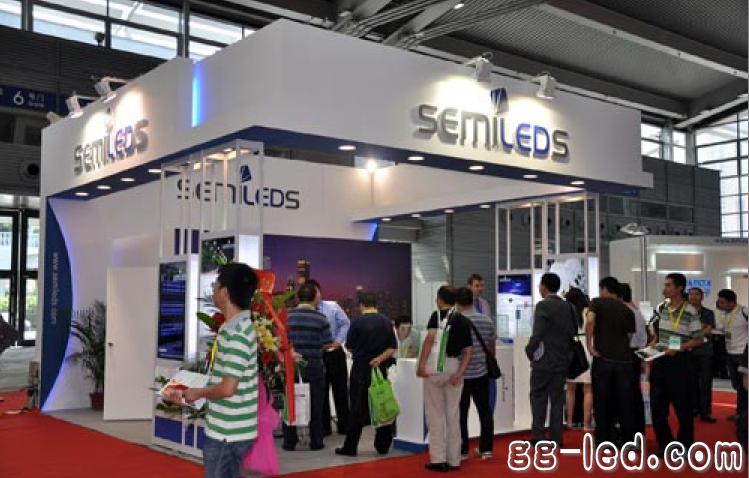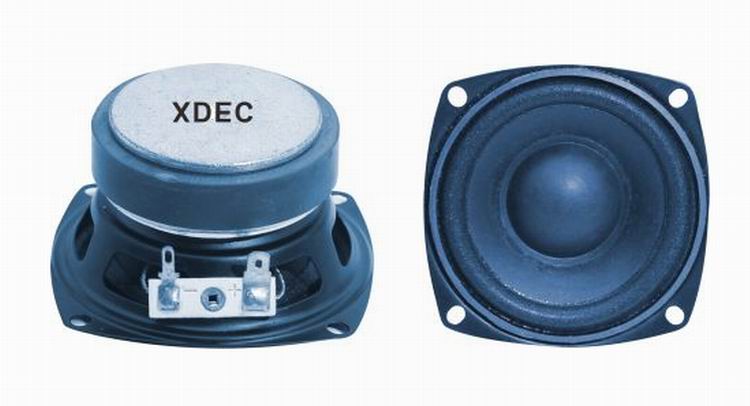GLII: Xu Rui photoelectric "loss" puzzle
Speakers with working frequency response range from 150~500Hz are called woofers.
FAQ
Q1. What is the MOQ? Woofer Woofer Speaker,Home Theatre Woofer,Audio Woofer,Sound Woofer Shenzhen Xuanda Electronics Co., Ltd. , https://www.xdecspeaker.com
After a lapse of one year, in March 2011, Xurui Optoelectronics officially entered the production stage.
"We currently have more than 100 lumens / watt of luminous efficiency products, the future luminous efficiency can also exceed 150 lumens / watt." Xu Rui photoelectric related high-level officials at the project launch ceremony revealed to the high-tech LED reporter, according to the plan, is expected in 2013 After the completion of the third phase of the end of the year, the company is able to produce 4 inch, 6 inch LED epitaxial wafers and high-power, high-brightness LED chips, with a luminous efficacy of over 135 lm/W. The company plans to go public three years after its establishment, when the capacity will reach 100 MOCVD.
“There are currently 6 MOCVD production lines and corresponding chip manufacturing equipment that have entered the factory, 2 of which are already in trial production, 2 are in commissioning, and 2 are being installed.†This is March 17, 2011, National Star Optoelectronics For the first time in the investor relations platform, the production of Xurui Optoelectronics was announced. However, since then, the outside world has been unaware of the expansion of Xurui Optoelectronics.
Recently, the 2011 financial report released by Guoxing Optoelectronics (002449.SZ) disclosed the real operating status of Xurui Optoelectronics. According to the report, unaudited financial data shows that as of December 31, 2011, Xurui Optoelectronics had total assets of 583.35 million yuan, liabilities of 345.89 million yuan and net assets of 237.46 million yuan. In 2011, the company was in the trial production period, with an operating income of 3.94 million yuan and a net profit of -6.52 million yuan.
In 2011, the domestic LED upstream chip suffered the most brutal overcapacity pressure in history, and the vicious competition in the market caused by long-term low-cost destocking. According to the research data of the High-tech LED Industry Research Institute (GLII), more than half of the LED epitaxial chip companies in China slowed down the commissioning and commissioning of new MOCVD equipment in 2011.
The thorny market competition, the export of technology - the deterioration of the operating conditions of Xu Ming Optoelectronics and the product challenges in the domestic market seem to be a "stumble" in the first year of Xurui Optoelectronics' operation. 
Technical route dispute
According to public information, Xuming Optoelectronics' metal substrate vertical structure LED chip design is a vertical LED structure that peels off the sapphire substrate of the LED epitaxial wafer and then covers it on the copper alloy substrate. This structure can solve a part of the LED heat dissipation problem, and can achieve higher luminous efficiency and longer lumen maintenance.
However, people in the industry said that the process of stripping the sapphire substrate and adding the metal substrate will generate heat. If it is not handled well, it will easily cause LED light decay.
According to a person familiar with the matter, Xu Ming Optoelectronics transferred the patents of six related metal substrate vertical structure LED chip technologies to Xu Rui Optoelectronics in the form of technology shares.
According to a random survey conducted by reporters on several medium and large-scale packaging manufacturers in China, it is found that the problems in the use of Xuming Optoelectronics chips are very common. Among them, the defects of the chip itself, the vertical structure is difficult to do series and parallel; and if the series and parallel are done well, the heat dissipation is not easy to handle; at the same time, the chip is relatively poor in impact resistance, and it is easy to generate leakage during the packaging process; Wiring is also inconvenient when doing COB structures.
In the investigation, the reporter also found that more than 90% of the responsible persons of the packaged manufacturers said that unless the customer specifies to use the Xuming Optoelectronics chip, the general situation will not use the Xuming Optoelectronics chip as the first procurement option.
The same problem naturally has similar market feedback on Xu Rui Optoelectronics. “The business staff of Xurui Optoelectronics said that its chip reached the level of 120 LM/W-130 LM/W, and the price of around RMB 1.7 also made us interested in the product.†The head of procurement of a large packaging company in China revealed, but During the sample testing process, they found that there was leakage, and the light efficiency only reached 110LM/W, and finally gave up the purchase intention.
Subsequently, the reporter also received similar feedback in the investigation of a number of domestic packaging companies. Among them, it also includes one of the domestic shareholders of Xurui Optoelectronics. The person in charge of the company said that the products of Xurui Optoelectronics do have some defects, and the voltage fluctuations are large and the series-parallel array is complicated.
According to industry insiders, the current mainstream LED chips are still in the formal structure, and the packaging process of the domestic packaging factory is relatively mature. If a chip with a vertical structure is packaged, a new package should be redesigned according to the characteristics of the vertical structure of the chip. Previously, the feedback information of the packaging manufacturers who had contact with Xurui Optoelectronics business considered that the packaging of vertical structure chips was difficult.
Faced with doubts from the market, Tang Daozheng, marketing manager of Xuming Optoelectronics Marketing Department, said in an interview with Gaogong LED last year: "The metal structure vertical structure chip of Xuming Optoelectronics does have limitations in some application fields. Because of the vertical structure The sidelights are relatively small, and the cost of phosphors and heat sinks is indeed relatively high. In particular, most of the packaging factories in mainland China have not yet had a good way to achieve the level required by Xuming Optoelectronics."
However, Xu Rui photoelectric related personnel revealed that the company has built a packaging technology simulation system according to market demand, and technical training for domestic packaging companies to solve the problem of packaging process and chip mismatch. 

XDEC: 2000pcs for one model.
Q2. What is the delivery lead time?
XDEC: 15 days for normal orders, 10 days for urgent orders.
Q3. What are the payment methods?
XDEC: T/T, PayPal, Western Union, Money Gram.
Q4. Can you offer samples for testing?
XDEC: Yes, we offer free samples.
Q5. How soon can you send samples?
XDEC: We can send samples in 3-5 days.